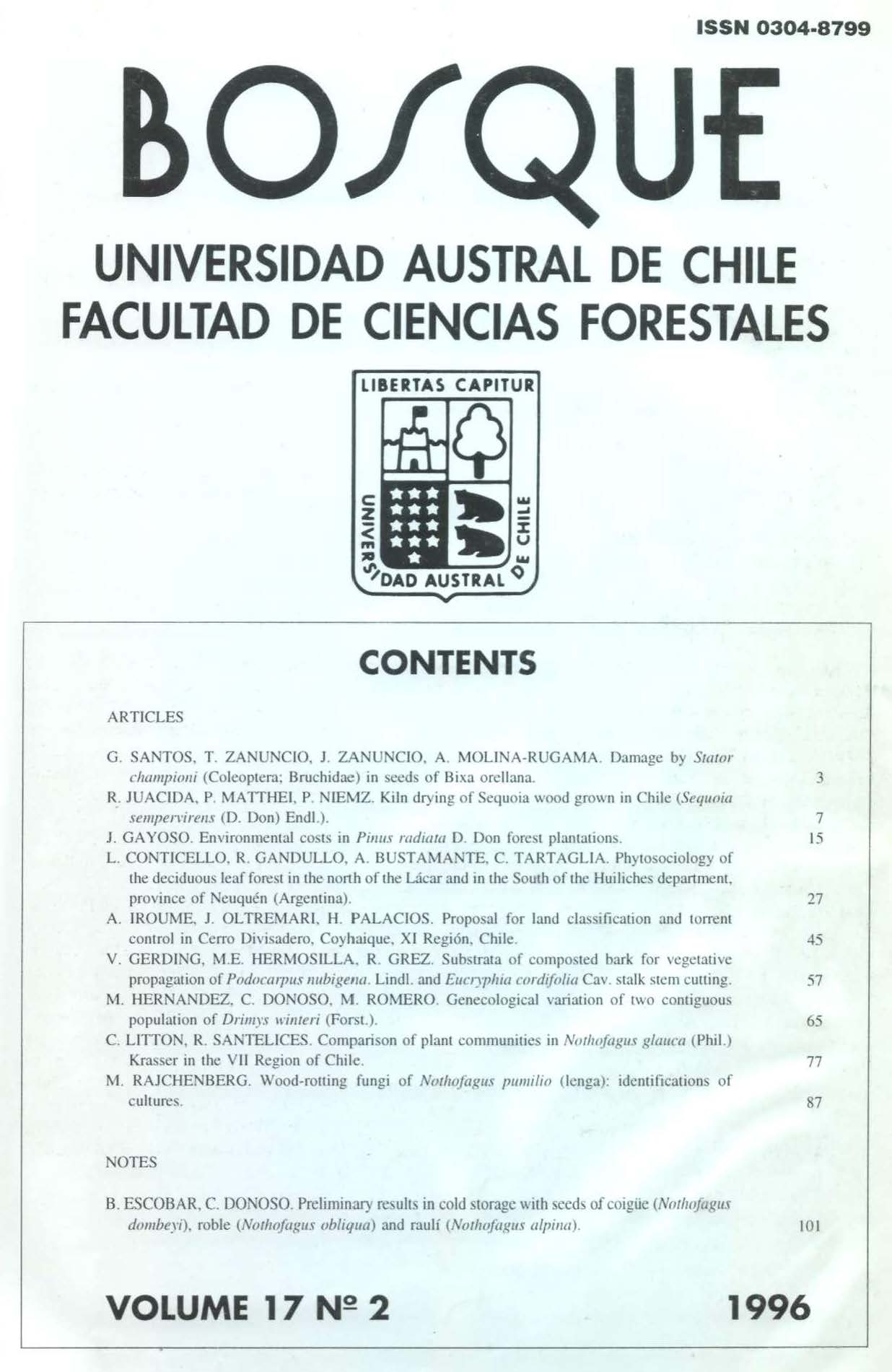Wood-rotting fungi of Nothofagus pumilio (Lenga): Identification of cultures
Main Article Content
Abstract
A total of 626 cultures isolated from wood-rots found in sections of 1029 logs of 'lenga' (Nothofagus pumilio) harvested from 4 stands from the Patagonian Andes of Argentina were studied. They were characterized according to their ability to produce oxidases and their macro and micromorphological features and the associated damage in wood. A key for the identification of the species was elaborated. Sixteen species were identified at species level, 2 at generic level, and 15 cultures (representing 2.35% of the total sum remained without identification. Postia pelliculosa, Serpula himantioides, Postia dissecta and Fistulina hepatica were the brown wood-rotting species more frequently isolated, whereas Phellinus andinopatogonicus and Aurantioporus albidus were the more frequently isolated species from white wood-rots. All of them were isolated from the hardwood and represented 90.1% of the isolations. Other species had either an isolation frequency lesser than 1.5% or were specifically related with wounds or with rots originating in branches that did not develop into the stem. The cultures of two other fungal species whose fruitbodies were found on standing trees in other stands were also included in this study.

